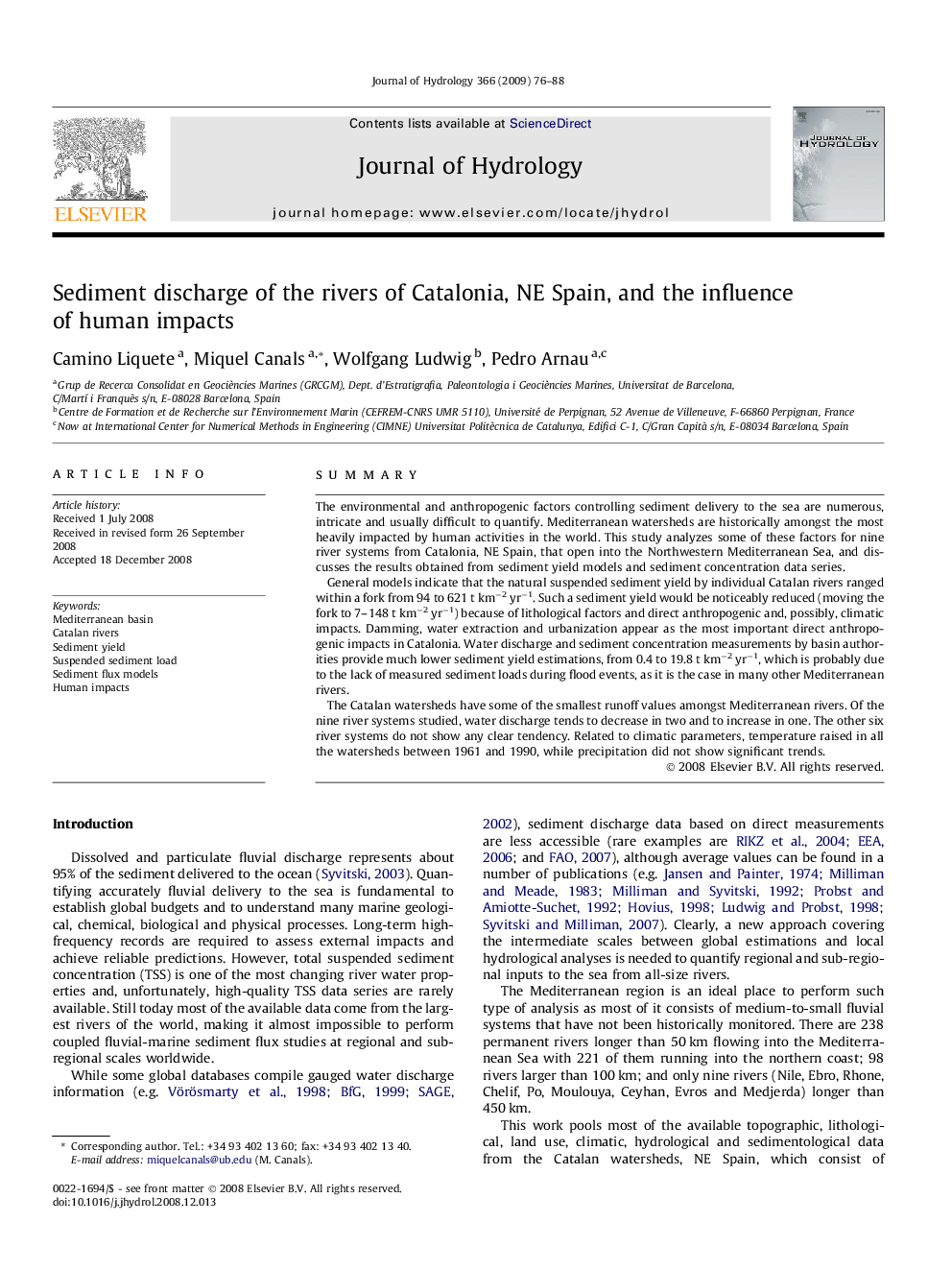| Article ID | Journal | Published Year | Pages | File Type |
|---|---|---|---|---|
| 4578907 | Journal of Hydrology | 2009 | 13 Pages |
SummaryThe environmental and anthropogenic factors controlling sediment delivery to the sea are numerous, intricate and usually difficult to quantify. Mediterranean watersheds are historically amongst the most heavily impacted by human activities in the world. This study analyzes some of these factors for nine river systems from Catalonia, NE Spain, that open into the Northwestern Mediterranean Sea, and discusses the results obtained from sediment yield models and sediment concentration data series.General models indicate that the natural suspended sediment yield by individual Catalan rivers ranged within a fork from 94 to 621 t km−2 yr−1. Such a sediment yield would be noticeably reduced (moving the fork to 7–148 t km−2 yr−1) because of lithological factors and direct anthropogenic and, possibly, climatic impacts. Damming, water extraction and urbanization appear as the most important direct anthropogenic impacts in Catalonia. Water discharge and sediment concentration measurements by basin authorities provide much lower sediment yield estimations, from 0.4 to 19.8 t km−2 yr−1, which is probably due to the lack of measured sediment loads during flood events, as it is the case in many other Mediterranean rivers.The Catalan watersheds have some of the smallest runoff values amongst Mediterranean rivers. Of the nine river systems studied, water discharge tends to decrease in two and to increase in one. The other six river systems do not show any clear tendency. Related to climatic parameters, temperature raised in all the watersheds between 1961 and 1990, while precipitation did not show significant trends.
